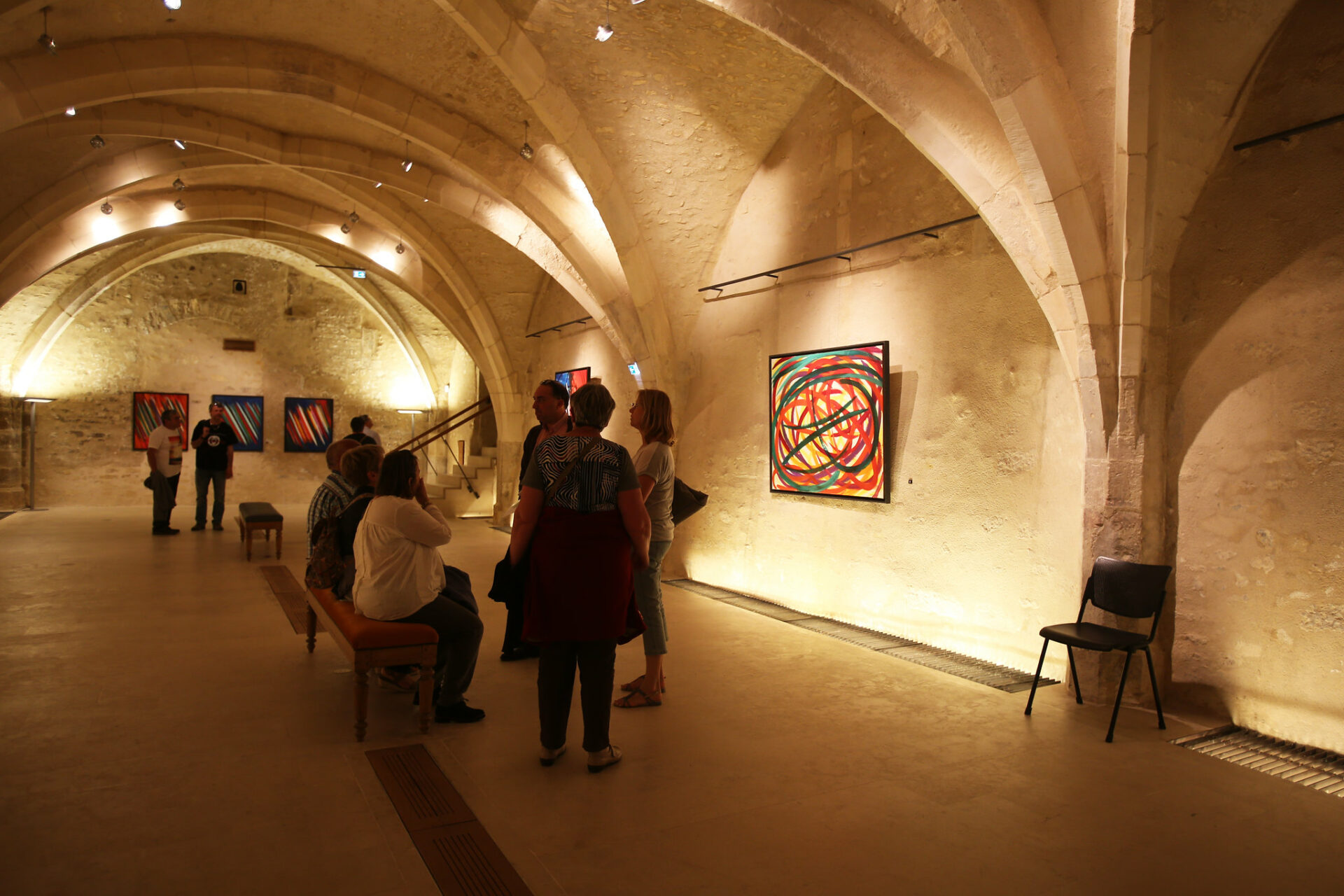Dans les espaces qu’offre l’ancien hôtel particulier Roussighnol, l’aménagement cherche à donner l’idée d’un salon du XVIIIesiècle. Autour d’un bureau plat estampillé de Pierre-Antoine Veaux (1738-1784), sont disposés fauteuils, commodes ou petite table, tous meubles du même siècle, qui ne se sont pas obligatoirement côtoyés dans la réalité. Un buste en terre cuite, La Belle Inconnue, attribuée à l’atelier d’Etienne Maurice Falconnet agrémente une commode comme cela pouvait se voir à l’époque. Au mur, une large place est faite à la peinture à sujet mythologique qui domine alors : Alceste rendue à son époux par Hercule, tableau de Charles-Antoine Coypel en est une parfaite illustration. Dans une vitrine, on retrouve des émaux, des ivoires mais également des pièces en verre notamment de Venise, des instruments de calcul et des médaillons du sculpteur italien Jean-Baptiste Nini (1717-1786).
Pour le XVIIe siècle, la peinture étrangère est dignement représentée qu’il s’agisse de dépôt de l’Etat ou de dons généreux. Tous les genres figurent dans les collections, de la nature morte, au portrait en passant par la marine. Ces tableaux de petit format ont été réalisés pour des commandes privées et étaient destinés à orner salons, ou chambres à coucher. C’est pourquoi, ces quelques tableaux sont suspendus aux murs d’un espace à dimension domestique, meublé de pièces d’époque : armoire, bureau, sièges divers, console.
Dans une vitrine, une sélection d’objets décoratifs ou d’usage viennent compléter l’ensemble. Plusieurs émaux de Limoges, témoins de la grande période de cette technique sont présentés, comme cette tête de Saint Pierre attribuée à Jean Reymond (XVe-XVIIe siècle) ; des ivoires mais également des objets plus courants comme cette pile de poids de Nuremberg.
Tout cela veut rappeler au visiteur la contemporanéité de certaines productions, afin de donner une idée, une atmosphère du siècle concerné. Il s’agit plus de laisser l’empreinte de l’ambiance qui pouvait régner dans un intérieur bourgeois de province, que de reconstituer à l’identique un appartement de prestige.
English :
In the spaces offered by the former Roussighnol mansion, the layout seeks to convey the idea of an 18th century living room. Around a flat desk stamped by Pierre-Antoine Veaux (1738-1784), are arranged armchairs, chests of drawers or a small table, all pieces of furniture from the same century, which did not necessarily come together in reality. A terracotta bust, La Belle Inconnue, attributed to the studio of Etienne Maurice Falconnet adorns a chest of drawers as could be seen at the time.
On the wall, a large place is given to the painting with a mythological subject which dominates then: Alceste returned to her husband by Hercules, painting by Charles-Antoine Coypel is a perfect illustration of this. In a showcase, we find enamels, ivories but also glass pieces, especially from Venice, calculating instruments and medallions by the Italian sculptor Jean-Baptiste Nini (1717-1786). For the 17th century, foreign painting is worthily represented whether it is a deposit of the state or generous donations.
All genres are included in the collections, from still life to portrait and navy. These small format paintings were made for private orders and were intended to adorn living rooms, or bedrooms. This is why these few paintings are hung on the walls of a space with a domestic dimension, furnished with period pieces: wardrobe, desk, various seats, console. In a display case, a selection of decorative or customary objects complete the set.
Several Limoges enamels, witnesses of the great period of this technique are presented, such as this head of Saint Peter attributed to Jean Reymond (15th-17th century); ivories but also more common objects like this pile of weights from Nuremberg.
All this wants to remind the visitor of the contemporaneity of certain productions, in order to give an idea, an atmosphere of the concerned century. It is more a question of leaving the imprint of the atmosphere that could reign in a bourgeois provincial interior, than of reconstituting an identical prestigious apartment.


